They’re that kind of love it or hate it ingredient. They’re polarizing, with a bold taste and an intensely salty flavor. If you enjoy food, you might want to give them a try. And it’s not that hard to learn how to cook with capers. You just have to keep in mind what they go with perfectly.
Before I went to Greece, I hadn’t given capers a lot of thought. I had no idea where they come from, how they’re harvested or what purpose they served, since when I was a kid I tried them once I hated them, and never touched them again, just shoved them out of the way on the outskirts of the plate if they turned up in my restaurant meal.
It all changed one sunny day when my friend I was visiting stopped the boat we were on and told me we had to jump in the water and then up a rocky cliff to perform some sort of a task. The water was bright blue and green, the rocks were spectacular, and I was in an adventuring mood. We went up the hill carefully and at the top there they were: caper bushes, loads of them. I had never seen them like that, and I guess the process of harvesting those wild capers ourselves made them precious somewhat. Sometimes it takes a nice anecdote to let go of an irrational hate for a food. And the Greece trip was that for me.
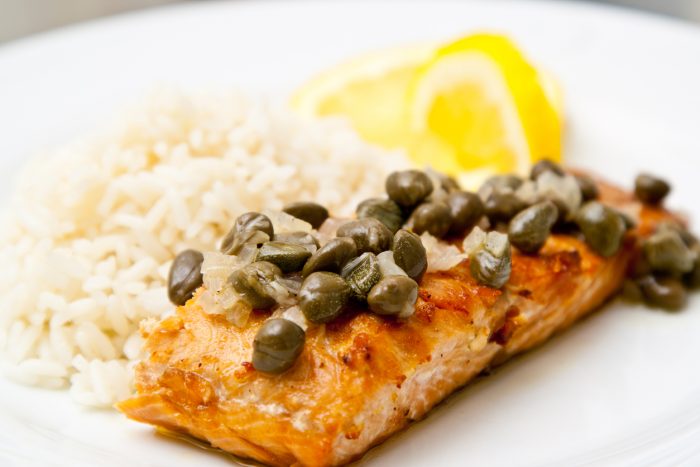
Why you should cook with capers
Not only are they tasty, but they’re also pretty healthy. And they’re widely used in Mediterranean cuisine, arguably one of the healthiest in the world. The bushes grow wild and free but are also cultivated, all around the Mediterranean Sea, including in Spain, Italy, and Israel. And of course, Greece.
One tablespoon of capers only have two calories, so they’re excellent for a diet. They also contain antioxidants, phytonutrients, and vitamins. They have dietary fiber, protein, vitamins A, C, K, and E, niacin, riboflavin, and also minerals like iron, sodium, calcium, and potassium.
Capers help your eyesight thanks to vitamin A, and they also help ward off some types of cancer. They help keep your energy at optimum levels of resistance throughout the day. The niacin supports cognitive functions and protects against cardiovascular diseases.
There have beauty benefits as well because capers help your skin glow more. You can actually place them on your skin, too, which will have a moisturizing effect. And they help you have a healthier head of hair thanks to its iron and B vitamins, which helps with hair growth.

Using capers in dishes
Capers have an intense flavor, a little sour, but their highest note is the saltiness. They practically live near salted waters, so their flavor is imbued with some nice sodium chloride. In fact, these capers are like little pickles, that pack intense flavor. In fact, you will buy them pickled at the supermarket. They work with raw dishes but also cooked ones. Greeks make an actual stew out of them, which is very special as I found that day in Greece.
The big capers you might find have a more intense flavor, but their texture is not as pleasant as the smaller variety’s. And they’re not as firm as the tiny ones. You can play with this and use the small ones as a garnish or to finish a dish. Meanwhile, use the larger ones in sauces or stews, where their texture can be broken down into something tender. But usually, the tiny berries are used to give some nice salty accent to whatever food they’re added to.
Capers enhance flavors
Capers tend to enhance the flavor of whatever you add them to. The traditional Mediterranean option is fish and they work amazingly if you add them to any type of white sauce that goes over the fish. But don’t stop at that when you cook with capers and pair them with lamb as well. And they go in tomato sauces and mayonnaise!
A winning combination – but a salty one, not recommended if you’re on a low sodium diet – is the combining of capers with anchovies and olives, other amazing ingredients of Mediterranean cuisine. So the easiest option when you cook with capers is a salad mixing those, with some mozzarella and whatever else your gut and your tongue tell you they go with.
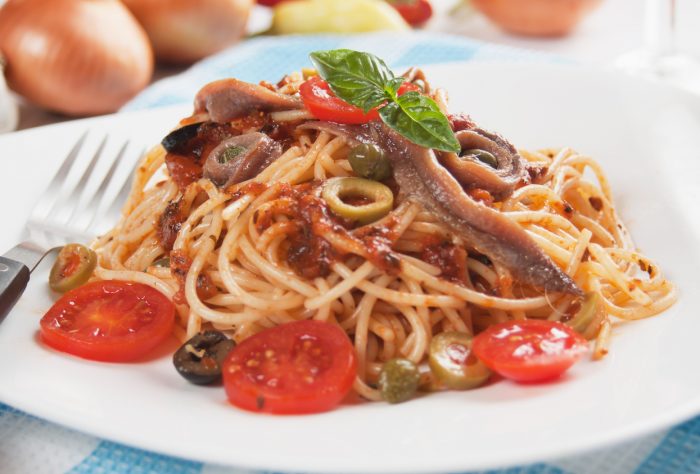
Go for Classic Mediterranean
So when you start to cook with capers, first consider adding them to classic Mediterranean dishes. You can enrich pasta sauce, for instance. When you make a heavy cream and tomato sauce combo, add some salmon pieces to the sauce and mix everything with the pasta you already have in your pantry. Don’t forget the olive oil!
If you’re looking for your next winning snack, how about some bruschetta with olive paste, some capers and an anchovy or two? Don’t forget the minced garlic, because it will go great with everything else.
If you’re a vegetarian and are trying to leave the bland behind when it comes to simply cooked vegetables, try adding some capers to your cauliflower, broccoli, eggplant and zucchini pieces because it will enhance their flavors.
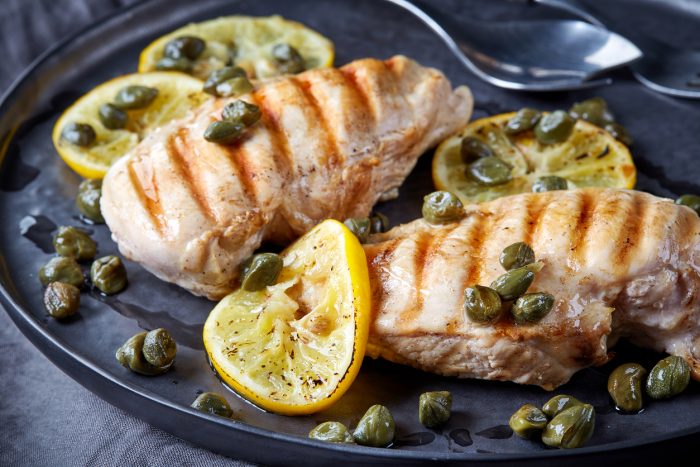

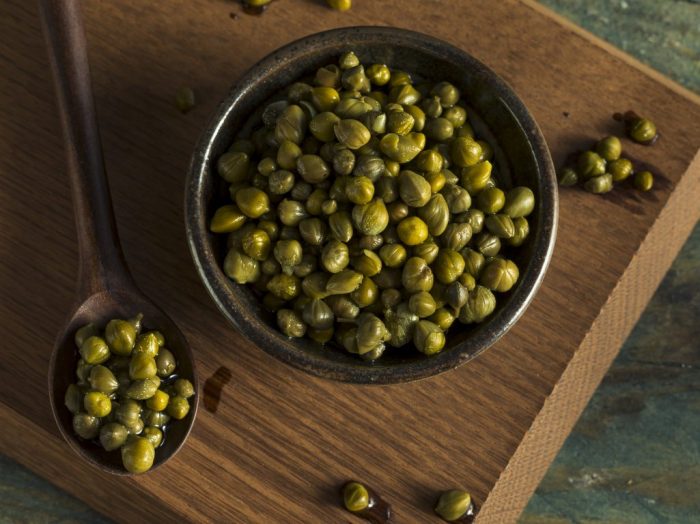


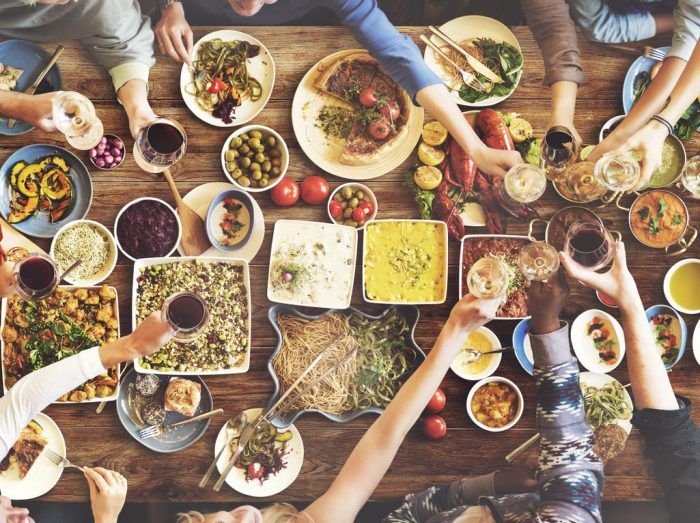
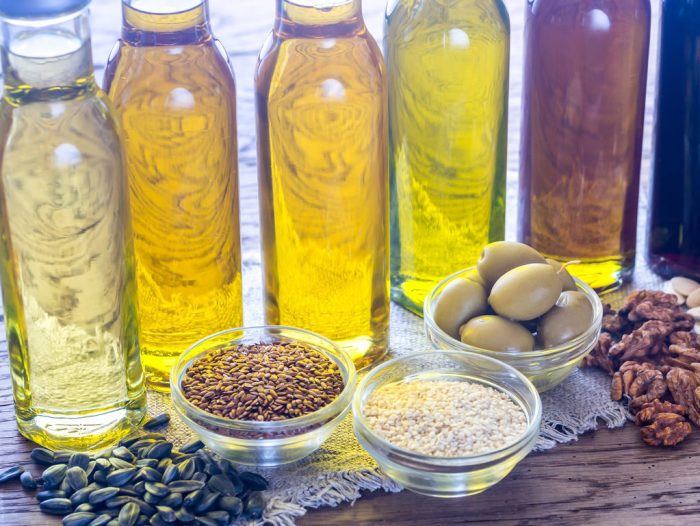
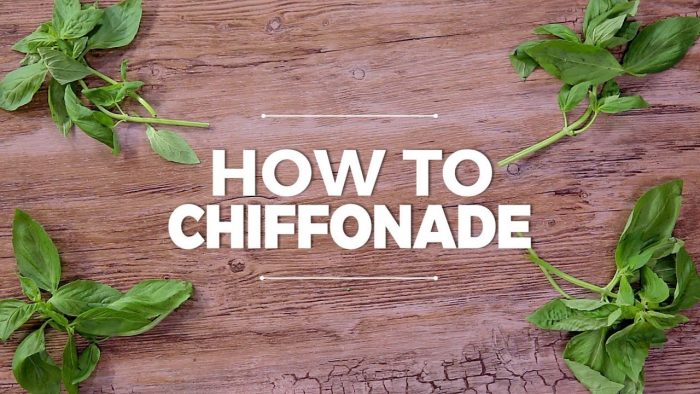
Thanks.
I remembered capers in my long departed grandmother’s potatoe salad at family get togethers.
I bought a big jar, as they don’t seem to be well stocked at the big box stores.
Not what I remembered.
Gram’s were small and hard.
These are larger and pickled – like.
Good article, I have a lifetime supply to experiment with.